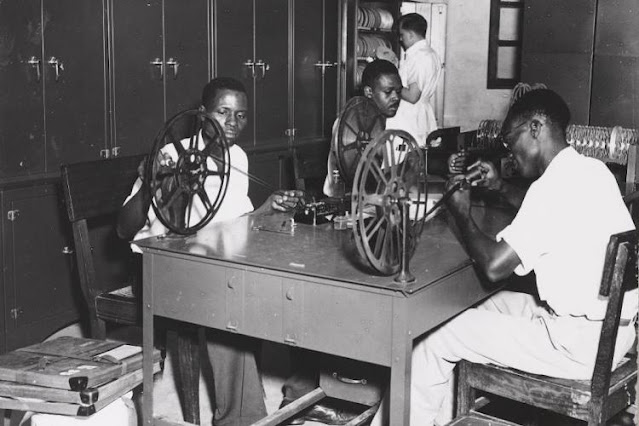THE CROWN: ACCURACY AND IMPACT ON POP CULTURE
The Crown has to entertain the audience without including fiction. Luckily, the British Royal family alone has provided enough drama to create six seasons, dealing both with relations within the relatives and world history. The wire that divides personal matters and global issues is really thin; crucial figures are not allowed to show their weaknesses, keeping unresolved traumas within themselves. Those same traumas can really make a difference in the wealth of an entire country.
 |
| Actress Vanessa Kirby as Princess Margaret and actor Matthew Goode as Lord Snowdon in "The Crown" (2016) |
ACCURACY
Screenwriter Peter Morgan wanted the show to be truly authentic, not only historically speaking, but also in the way characters behave. All actors and actresses are extremely similar to the real people they are playing. Princess Diana’s actresses, Emma Corrin (season 4) and Elizabeth Debicki (seasons 5-6) have been successful in giving a new life to one of the most loved women in history. Their mannerism unequivocally reminds us all of our lost princess; the shyness in her eyes, her iconic look given by lowering her chin, and her suffering throughout her marriage and union to the family.
Another clear example is the main character, Queen Elizabeth herself, interpreted firstly by Claire Froy (seasons 1-2), then by Olivia Colman (seasons 3-4) and finally by Imelda Staunton (seasons 5-6). Elizabeth II° became Queen at the age of 21 and, as years went by, she became more and more aloof, even with the people closer to her. She could not bring together her personal life and her job, otherwise, she wouldn’t have been able to fulfill her duty as Queen, so she tried to isolate herself.
In brief, the production team brilliantly managed to write an accurate show, but also to exhibit the characters in their vulnerability without coming up with anything untrue.
The research team worked hard, consulting British libraries and talking to people who worked closely with the Royal Family, in order to make no mistakes. Details are the ones that make a difference in the credibility of the story, regarding locations, costumes, and manners. The crew had to thank Major David Rankin-Hunt, who has been of great help when it came to getting the official protocol right. He worked for 33 years at Buckingham Palace, firstly as registrar for Lord Chamberlain and then as an administrator for the Queen’s art collection. David Rankin-Hunt was the one who knew the most about living at the palace: how the staff was supposed to speak to the royals, how official meetings were conducted and what was the appropriate way to meet the monarch, even between family members.
 |
| Actress Emma Corrin as Princess Diana and actor Josh O'Connor as Prince Charles in "The Crown" (season 4, 2020) |
Additionally, it is really interesting to see that The Crown gives more importance to bypassed situations and figures. Princess Anne (played by Erin Doherty) is Elizabeth and Philip’s daughter; before the show she was never in the spotlight, shadowed by her brother Charles and then by Diana, Princess of Wales. Yet, she has now gained much more popularity thanks to her storyline in the series. It appears that she was somehow frustrated by Diana’s fame since they were the same age and people seemed to be way more fond of the new princess when Anne had always been there.
Moreover, showing how secondary characters interact with each other is captivating: Queen Elizabeth has worked with many Prime Ministers and seeing them, making crucial political decisions together, is enlightening. Many fans have a keen interest in the connection between the Queen and Margaret Thatcher (played by Gillian Anderson): two vigorous women with different mindsets in a patriarchal society, trying to decide the future of a country.
When thinking about the Royal Family, the first people that come to mind are Diana and Charles. Meeting new scenarios is what makes The Crown so true and authentic, it is a reminder that the protagonist of this TV series is not the Queen, but the Crown in its complexity.
 |
| Actress Gillian Anderson as Margaret Thatcher, in "The Crown" (season 4, 2020) |
THE ROYAL FAMILY IS POP CULTURE
Believe it or not, the Windsor family has become part of pop culture. Everyone seems to have an innate interest in one of the few remaining monarchies in Western countries. Queen Elizabeth has reigned for an entire century, and there is no denying, she had an essential impact on many generations. As a remarkable person, she will always be missed and never forget.
Nowadays, many people do not believe in the monarchy anymore, but they are willing to respect Elizabeth as a crucial figure. The Crown is not the only production about the Royal Family; the movie The Queen with Helen Mirren is a perfect example, alongside The Majestic Life of Elizabeth II, a documentary about her time as a sovereign. Every cinema production has contributed to making Elizabeth II’s reign a strong mainstream phenomenon, but The Crown reached a higher point through its cinematic skills and meticulous research for authenticity.
 |
| Actress Elizabeth Debicki as Princess Diana in "The Crown" (season 6, 2023) |




Comments
Post a Comment